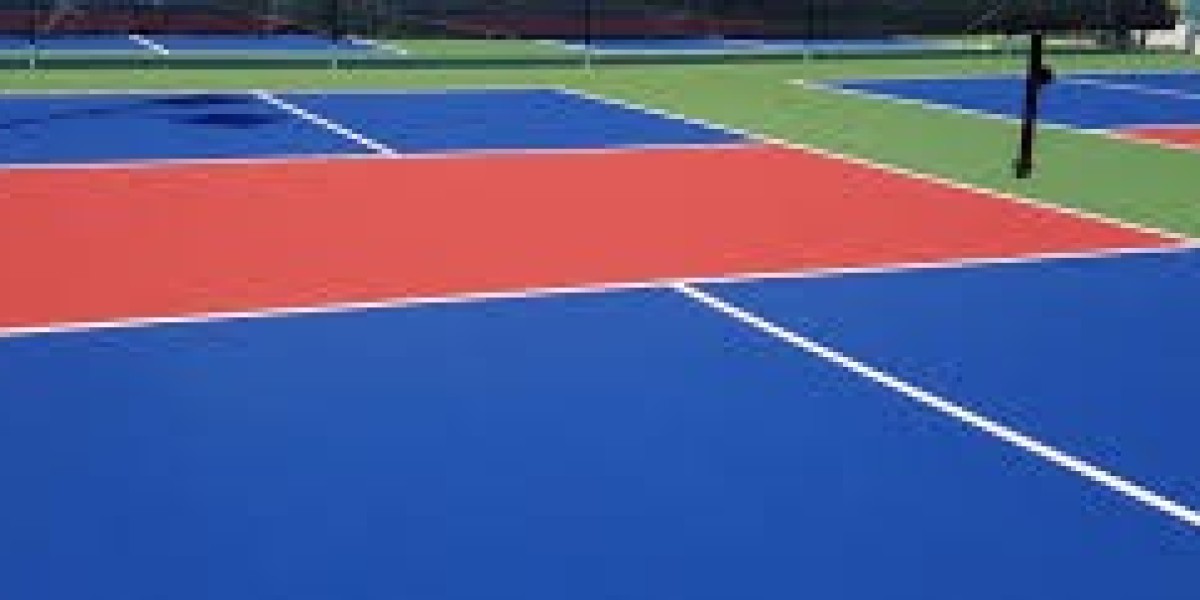If you’re thinking of building a pickleball court—whether for your backyard, a club, or a public facility—there’s more to it than painting lines on an empty space. Let’s break down the essentials so you know exactly what’s involved.
Why Pickleball Courts Are in High Demand
The magic of pickleball lies in its accessibility. It blends elements of tennis, ping-pong, and badminton, making it easy to learn for beginners but challenging enough to keep seasoned athletes hooked. Unlike tennis courts, pickleball courts are smaller, so communities can fit more courts into the same area, which is perfect for accommodating the sport’s growing popularity.
This surge means that pickleball court construction is a booming industry. Parks departments, HOAs, schools, and even private homeowners are investing in courts to meet the demand.
Step 1: Choosing the Right Location
Every great court starts with the right spot. You’ll want a flat, stable surface with good drainage—standing water is the enemy of any sports surface. Sun orientation matters too; courts that run north–south prevent players from staring into the sun during morning or evening games.
If you’re building outdoors, consider proximity to neighbors. Pickleball can be noisy due to the distinctive “pop” of the paddle hitting the ball, so some communities opt for sound-reducing fencing or strategic landscaping.
Step 2: Surface Materials
The surface is one of the most critical aspects of pickleball court construction. Your options include:
- Asphalt – A popular choice for its durability and relatively low cost. Needs sealing and painting.
- Concrete – Extremely long-lasting, but can be more expensive upfront.
- Sports tiles – Modular tiles that can be installed over an existing base, offering a cushioned feel for players.
Once the base is prepared, the surface is coated with acrylic paints specifically designed for sports. This not only gives the court its bright, inviting color but also improves traction.
Step 3: Dimensions and Layout
Official pickleball courts are 20 feet wide by 44 feet long for both singles and doubles play. You’ll also need adequate space around the court for player movement—ideally at least 10 feet on the sides and 20 feet behind the baselines.
The court is divided into zones:
- The non-volley zone (or “kitchen”)
- The service areas
- The baselines and sidelines
Accuracy is important here—incorrect measurements can make gameplay frustrating or even unsafe.
Step 4: Net Systems
The net in pickleball is 36 inches high at the posts and 34 inches in the middle. Permanent nets are a must for dedicated facilities, while portable nets work for multi-use spaces. A high-quality net system will withstand tension, weather, and frequent use.
Step 5: Fencing and Lighting
Fencing keeps balls from flying out of bounds and helps define the playing area. Chain-link fencing is common, but windscreen fabric can be added to block distractions and improve visibility.
If you want evening play, lighting is a key investment. Proper lighting should provide consistent coverage without blinding players. LED fixtures are energy-efficient and have become the go-to choice.
Step 6: Cost Considerations
The cost of pickleball court construction can vary widely, from $15,000 for a basic outdoor asphalt court to $40,000+ for a high-end facility with premium surfacing, lighting, and fencing. Indoor courts typically require a bigger budget due to building infrastructure needs.
Budget planning should also include ongoing maintenance—resurfacing every 4–8 years, net replacement, and repainting lines as needed.
Step 7: Accessibility and Amenities
To make your court inviting, think beyond the playing surface. Benches, shade structures, water stations, and accessible pathways can transform a simple court into a true community hub. Adding these touches helps players stick around longer and encourages social interaction, which is a big part of pickleball’s charm.
Why It’s Worth the Investment
Investing in pickleball court construction isn’t just about meeting demand—it’s about building community. Pickleball has a unique social energy that brings people of all ages together, from teens looking for a new sport to retirees seeking fun exercise.
Whether you’re planning one court for your backyard or a dozen for a public park, following best practices for location, surfacing, and amenities ensures your court will be a long-lasting asset. With proper planning, your pickleball court could become the go-to gathering spot in your area—and maybe even the birthplace of your community’s next champion.







